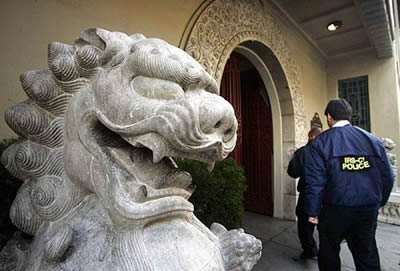Remember that Saturday Night Live sketch where Phil Hartman played a cave man found frozen by scientists, thawed out and became a lawyer? His shtick worked like a charm with juries.
It’s not so cute, though, when it’s the director of a museum raided for buying stolen goods doing the fuzzy appeal to ignorance.
Although the museum has extensive collections of Ban Chiang artifacts, Mr. Keller said, “We honestly did not know this material was illegal.” He added that his researchers had been unable to find evidence of the Thai antiquity law forbidding their export, passed in 1961, in the databases they regularly consulted.
[…]The agent was also said to have mailed Mr. Keller a copy of the Thai antiquity law that month. “I don’t recall ever seeing that correspondence,” Mr. Keller said.
The museum has never required proof that artifacts it accepts have been obtained legally, Mr. Keller said. Donors are required to sign a statement saying that they are the rightful owners of an artifact and that it is in the United States legally, he said, but they are not asked to provide documentation.
Mr. Keller said it was a “very difficult thing to prove” where an artifact has come from or how long it has been in the United States. “I don’t know how you prove it,” he said.
Ladies and gentlemen, I’m just a museum director. Your world frightens and confuses me! Sometimes, the searching of your Google or the flipping through your library card catalogs looking for well-established 40-year-old laws or doing any other elementary due diligence to ensure I’m not supporting a dirty illegal trade endemic in my industry make me want to jam my fingers in my ears and say “lalalalala”.

